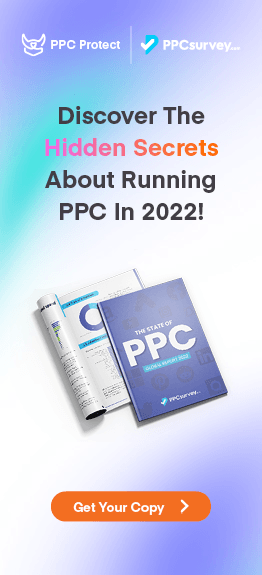When it comes to managing paid search campaigns, there are endless PPC metrics that advertisers can track and measure.
Unlike other traditional advertising channels, pay per click marketing allows advertisers to track every aspect of their campaigns. From how many impressions and clicks they receive, to their click-through rate and cost per click, it’s no secret that PPC campaigns are highly data-driven.
But with so many PPC metrics out there, not all of them are made equally. This often starts the debate of key performance indicators vs vanity metrics, and which are the most important PPC metrics to monitor.
Although the most important metrics indeed vary from campaign to campaign, there are still some that are crucial for every campaign’s success.
To help you ensure your paid search campaigns are successful and are getting the best ROI possible, here are the most important PPC metrics you should be monitoring.
The Most Important Paid Search Metrics

10. Number of Conversions
9. Average Order Value (AOV)
8. Impression Share
7. Customer Lifetime Value (CLV)
6. Conversion Rate
5. Cost Per Acquisition (CPA)
4. Cost Per Click
3. Quality Score
2. Click-through Rate
1. Return on Ad Spend (ROAS)
10. Number of Conversions
The number of conversions generated from the paid search campaign
The number of conversions from a campaign is always an important metric to check, assuming you’re not running a brand awareness campaign. Ultimately, revenue and profit come from the number of conversions a campaign makes, but on its own, the number of conversions can be slightly misleading.
10 conversions might be good, especially if you were up from 7 conversions last month. But without taking into account the amount of money spent to get these conversions, it’s hard to judge whether the campaign was a success or not.
The only reasons this PPC metric made it onto the list is that many clients and stakeholders often want a campaign’s results in “simple figures”.
A much better metric when it comes to measuring conversions is the cost per acquisition metric that we’ll cover later. But if you ever want to give a client or management the results in simple terms, the number of overall conversions is a good place to start.
9. Average Order Value (AOV)
Overall revenue / the number of sales
The average order value might not be considered an important PPC metric to many people, but it gives advertisers a good understanding of customer behavior.
To get the average order value, simply divide the total revenue from sales by the number of sales. If a store generated $100,000 in sales from 2,500 orders, then the average order value would be $40.
Don’t know your acronyms? Learn all the basics with our PPC terms glossary.
Ideally, this metric should be as high as possible. If all other parameters and metrics are kept the same, a higher average order value means more revenue.
Increasing your AOV is a good strategy that can significantly increase the ROI from your paid search campaigns. After all, if it costs you $5 to get someone to your website, you’d rather have them spending $60 instead of $40.
Improving the AOV can be tricky, but by using multi-purchase deals and discounts, this can often be enough to encourage users to spend more.
8. Impression Share
Number of possible impressions / actual number of received impressions
If you’re running a brand awareness campaign and want to get your businesses and brand out there, then knowing how many people have seen your ad is crucial.
The go-to metric for this type of campaign in Google Ads is called the impression share metric as it specifically measures the reach of your ad.
As the name suggests, this metric measures the percentage of all potential impressions your ads are getting. If there were 5,000 searches in a month for a keyword and your ad appeared 4,000 times, that would be an 80% impression share.
This is an important metric as it tells you how many people saw your ad, as well as how many didn’t. To help improve your number of impressions, Google also breaks down this metric into two categories to help you understand why you aren’t getting 100%. This is split into impression share lost due to daily budget and impression share lost due to ad rank.
By knowing what’s holding you back from getting those additional impressions, you can then make tweaks to your daily budget or campaign.
7. Customer Lifetime Value (CLV)
Total amount of spend expected from a customer over the business relationship
When it comes to creating a profitable PPC campaign, one of the most important metrics is the customer lifetime value or CLV. Similar to the average order value, this metric helps advertisers know how much they should be bidding and what their target cost per acquisition should be.
The customer lifetime value can be defined as the total amount of profit or spend expected from a customer during the entire relationship.
This CLV metric is crucial when it comes to SaaS and subscription-based businesses as these relationships can often last years. Unlike other retail businesses where customers buy something every few months, SaaS businesses have predictable recurring revenue from clients every month.
If a customer is paying $20 a month for a VPN service, and their average life as a customer is 24 months, then their customer lifetime value will be $480. This metric can then be used to ensure that the cost per acquisition of a client is not too high or too low.
Without knowing a business’s customer lifetime value, it can be very easy to accidentally bid too low or too high, which almost always leads to poor results.
6. Conversion Rate
Number of conversions / number of ad clicks
As covered earlier, the number of conversions from a campaign on its own is not that important. It’s only once you start to use it in conjunction with other metrics such as the cost or number of clicks, does it start to become more insightful.
One of those metrics that offers a good insight into your campaign as a whole is the conversion rate. It can be defined as the percentage of clicks from your PPC ads that end up converting into leads or customers.
Clearly, advertisers want as high conversion rate as possible, as it means more revenue and ultimately profit. However, there are usually more factors than just the paid search campaign that come into play when determining this figure.
A low conversion rate could point to potential problems within the conversion funnel. This means anything from the landing page such as page speed, pricing, tone of content, to the color of a button can affect the conversion rate. Fixing these problems and increasing the conversion rate is a constant battle for PPC managers.
There’s a reason why advertisers continually A/B test their landing pages.
5. Cost Per Click
How much an advertiser is charged for a click on their ad
One of the most commonly measured and tracked PPC metrics is the cost per click figure. The foundation of any PPC campaign, it’s simply the amount charged every time a user clicks on an ad.
Depending on the niche, campaign type, bid strategy and quality score, the cost per click can range dramatically. And due to competitors also continually changing their bidding strategies, many advertisers tend to use the average cost per click metric instead.
The cost per click is an important metric as it helps advertisers determine how much they can pay per click and still make a profit. By working out their target cost per acquisition, the formula can be reversed to work out how much they should be paying on average per click.
If the target CPA is $40 and every 1 in 33 (or 3%) users convert, then they should be paying on average no more than $1.21 per click. Any more than this and they would exceed their $40 CPA target.
4. Cost Per Acquisition (CPA)
Average cost per click * average number of clicks for a conversion
Also known as the cost per conversion or cost per lead, the cost per acquisition metric is incredibly important when it comes to your bidding strategy. Combined with the customer lifetime value (CLV) and cost per click (CPC) metric, these are often used together to ensure a campaign remains profitable.
If the customer lifetime value decreases too much, then a good cost per acquisition metric can often be the difference between profitability.
In other words, if the customer lifetime value of a customer is $100, but it costs $120 to convert a user into a customer, then that’s not a profitable campaign. Knowing your CPA is crucial, but on its own, it’s not that useful.
Many advertisers often believe that a lower cost per acquisition figure is better. But unfortunately, that’s not always the case. Due to the cost of bidding on PPC networks, there is usually a correlation between a low CPA and the number of conversions. As your cost per click decreases, so does the number of conversions.
You may be able to lower your CPA to $1, but if your conversions drop from 50 a month to 5, is it really worth it?
3. Quality Score
The relvancy of an ad as rated by Google
A large part of managing PPC campaigns is reducing costs as much as possible. By reducing metrics such as the cost per click, in turn, it will help reduce the cost per acquisition and save advertisers money.
On the Google Ads network, one of the easiest ways to reduce the overall cost of your campaign is to improve your quality score. This metric measures how relevant your PPC ads are to the specific keywords and increases or decreases your cost per click depending on the score.
Starting from the lowest score of 1/10, this means your landing pages aren’t relevant at all compared to your ads. To encourage you to do something about it and make them more relevant, Google will increase your cost per click by 400%.
On the other hand, a score of 10/10 means your landing pages are very relevant when compared to your ads. To reward you for making them relevant, Google will discount your cost per click by up to 50%.
So it’s pretty clear that all advertisers want a 10/10 quality score for that discounted cost per click rate.
2. Click-through Rate
Number of ad clicks / number of ad impressions
To drive traffic and sales to a website, you need people to click your ad. Measuring the number of clicks an ad receives might sound like a useful metric, but just the number of clicks on its own provides little information. Instead, comparing the number of clicks to the number of people that have seen the ad is a much better metric.
The click-through rate is the number of clicks an ad receives divided by the number of people that saw the ad (impressions). For example, if 1,000 people saw an ad and 23 people clicked it, then the click-through rate would be 2.3%.
The click-through rate is very important when it comes to PPC advertising as on many networks it influences how much you pay per click. On the Google Ads network, the click-through rate has a direct influence on an advertiser’s quality score and ad rank.
Measuring the click-through rate of an ad is a great way to determine how effective it is. A low CTR might indicate the ad isn’t relevant or compelling enough to users and might need some adjustments. By comparing an ad’s CTR to other ads and industry metrics, it can be a quick way to determine if an ad is over or underperforming.
1. Return on Ad Spend (ROAS)
Revenue from ad campaign / cost of ad campaign
The entire point of running a paid search campaign is to generate a profit for the business. No matter if it’s a shopping campaign, brand awareness campaign, or lead gen campaign, your aim should be to make money.
If you’re running a PPC campaign and have been losing money consistently, then what’s the point? Unless you have free Google ad grants credits, then you might as well be spending that money elsewhere, such as on search engine optimization.
That’s why the Return on Ad Spend (ROAS) metric is one of the most popular and important PPC metrics. Not only does it give a good overview of businesses paid search campaigns in general, but it’s also an insightful number to show stakeholders.
If an advertiser can show that they are generating a profit from a paid search campaign, then a business will be willing to invest more money. Of course, there will be diminishing returns at some point, but as long as the campaign is making a healthy profit, there is no reason to stop it.
Conversely on the other hand, if a campaign is continually losing money month after month, then that ad spend could probably be spent elsewhere. That’s why measuring your ROAS is a crucial PPC metric for every marketer.


